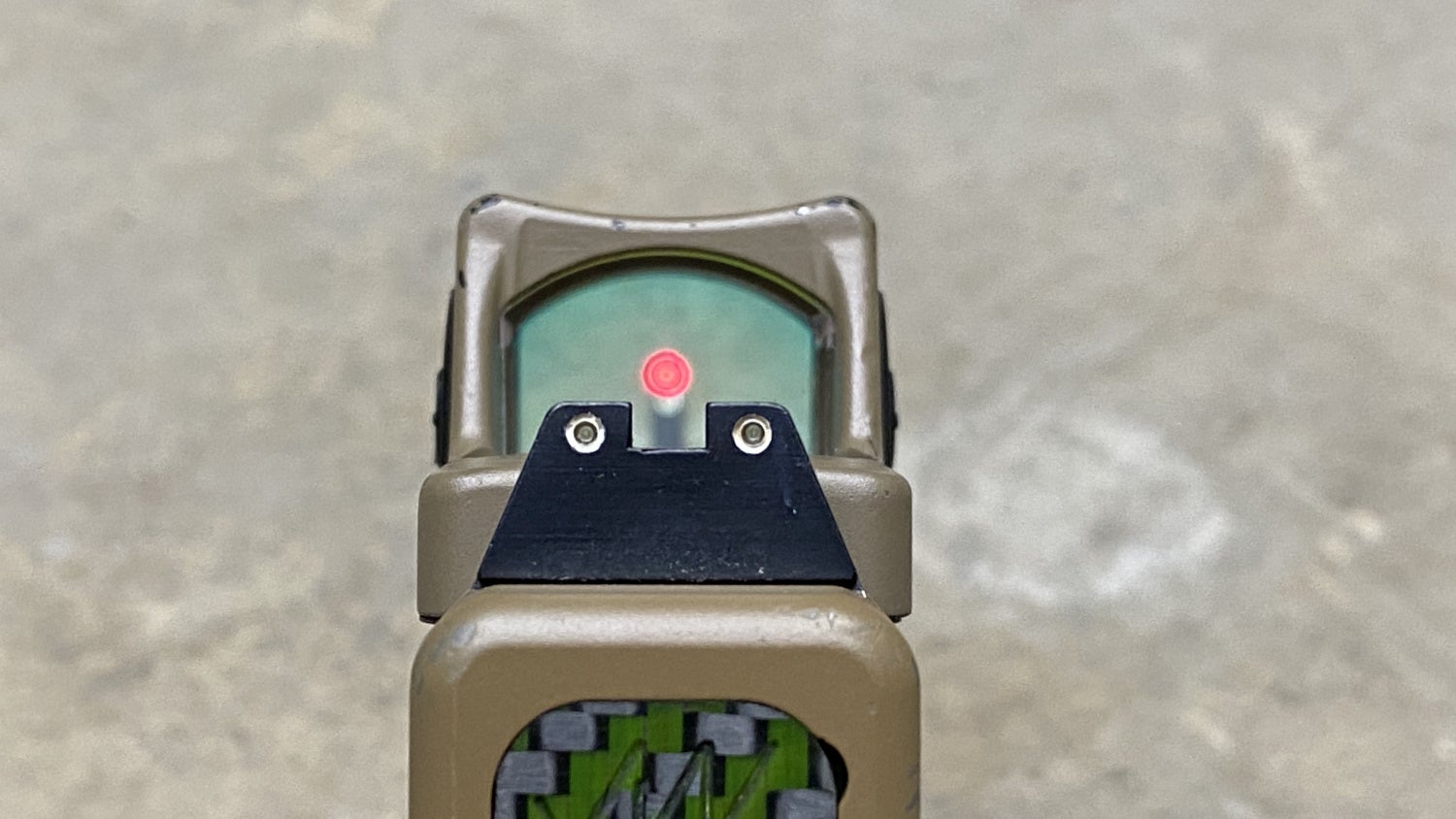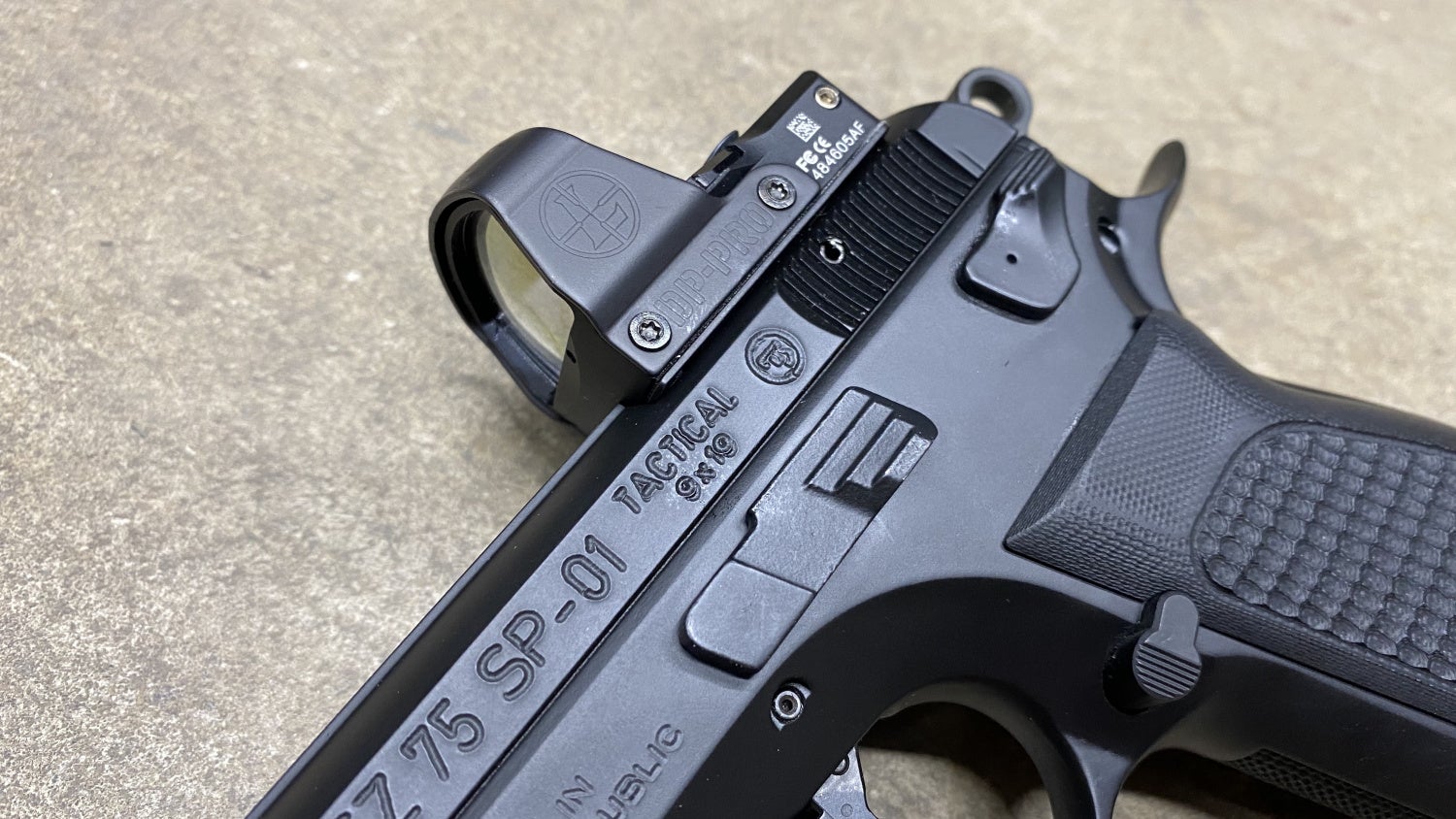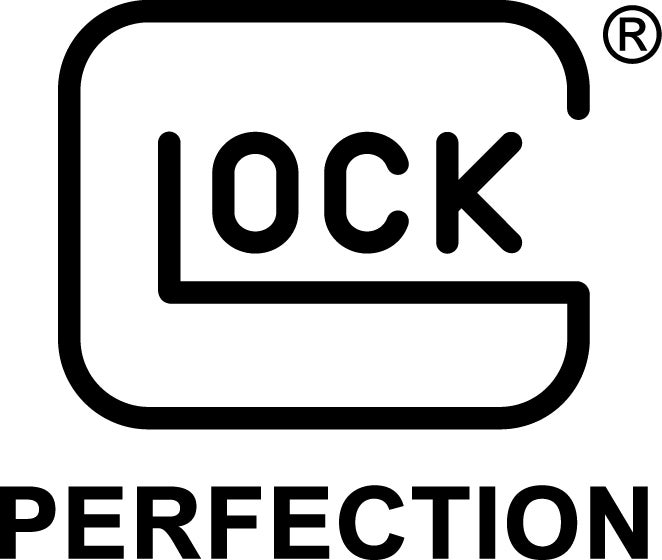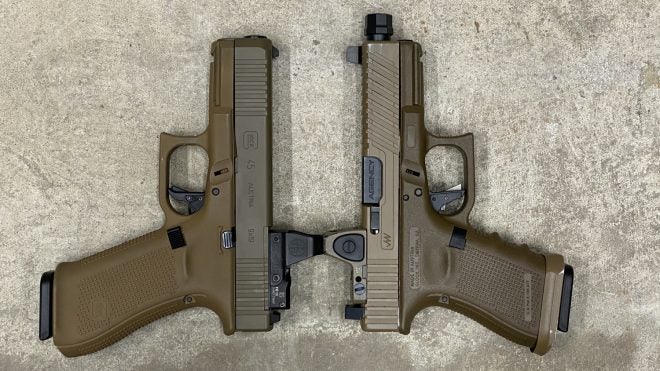Carrying a concealed firearm with a red dot for the first time can be a strange feeling. Depending on the person, it can be beneficial for aging eyesight or for having fluid transitions between targets where it might otherwise take longer. I will be the first to admit that I’ve struggled to adjust from iron sights to the 21st century with a slide-mounted optic. There are a few different things to help you adjust over time and I’ll break down the various dot sizes for the newbies in the group who may not know what’s best for certain guns. Let’s dive into the world of pistol optics.

Training To See The Dot
The number one issue when switching over from traditional iron sights to a slide-mounted optic is the ability to quickly acquire the dot and put rounds on target. Probably the most common issue is someone moving the firearm in a circular motion. Don’t feel bad if you have done this in the past or currently do to find the red dot because almost everyone starts out that way. One of the best points I can give people is to find that reference point and start to build muscle memory when you find the point where the dot is clearly visible.

Different Height of Sights
There are a few different ways to develop the muscle memory in time. The easiest way is by doing reps of 1-2 shots at the range or practicing at home through dry firing. There are a few little tricks to help you find the dot faster in the beginning but honestly, nothing beats putting the work in to learn the new reference point for your dot. One thing that really helped me besides dry firing and range time was installing suppressor height sights that cowitnessed with my red dot. Having the suppressor height sights line up with your red dot can act as training wheels in a way since you’re bringing your eye up to line up the sights and the red dot is automatically in the right spot.

Some will argue that suppressor height sights will impede the field of view inside your optic and that is a valid point to a certain extent. The higher sights will block out the lower section of the optic but it will help beginners easily see the dot rather than searching for it and losing time. Now don’t get me wrong, it’s more than possible to learn with just the red dot and regular height sights, but typically it does take more time before the muscle memory starts to kick in. Ultimately it’s your decision on what’s the easier method of training but using suppressor height sights as a training set worked really well for me in the past.
Types of Optics
Finding the right optic is honestly half the battle when it comes to carrying with a red dot. When it was time for me to pick out my first optic, I decided on the Trijicon RMR as a slide-mounted red dot. I knew it was one of the most reliable sights but shooting with the RMR can be tricky for a beginner. The field of view is limited compared to something like the SRO, Delta Point PRO from Leupold, or the Romeo 1 PRO from SIG Sauer. Having an optic like the Trijicon RMR is great for durability and longevity but is tougher to reference than something with a larger field of view like the three optics listed above. The larger optics may not be as tough as something like the RMR but it will be much easier to pick up when you’re aiming your handgun.

Different optics will have various profiles and heights depending on the model. Some will be larger than others.
Dot size is another important factor to consider when looking to buy your first optic. Your optic should be depending on what size gun you’re installing the optic onto and what the application for the red dot will be over time. Having something like the New RXP XCompact from SIG Sauer is great with a larger 6 or 9 MOA dot since its a compact handgun and will be primarily used at close distances. Using that large dot makes shooting at closer ranges easier than searching for a smaller dot. Having a smaller dot like a 3.25-6MOA is great for a larger range gun that you may take shots with at longer distances. It’s important to take a look at your needs and decide on an optic that fits a given roll best.

Fitting Your Optic To A Holster
It may seem like a minor issue but finding a holster to fit an optic can be a real struggle depending on the make and model. Finding a quality Kydex holster company is the easiest way to find a holster for whatever optic and handgun combination you decide to go with. It’s tough to find optics ready leather holsters but there are a few custom shops around the country who will help you out with that. If things get really desperate, it’s fairly easy to take a Dremel to a standard Kydex holster and cut a notch into the top of the holster to accommodate a slide mounted optic.

Overall Thoughts
Making the decision to install an optic onto your concealed carry firearm can be a tough transition but with the proper practice and time dedicated to learning, it will become natural with time. Choosing the proper optic for your needs will be the difference between loving your new handgun addition or giving up entirely and going back to iron sights.

Let me know what you guys think about carrying a red dot on your carry gun in the comments below. Is it viable or are iron sights still the best route to go when it comes to concealed carry? I’d love to hear your different opinions on this below. If you have a question about concealed carrying or any firearm related questions feel free to shoot me a message on Instagram @fridgeoperator. Stay safe out there and thank you for all the support!
TFB’s Concealed Carry Corner is brought to you by GLOCK

 Your Privacy Choices
Your Privacy Choices
